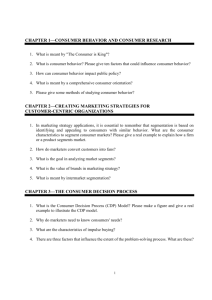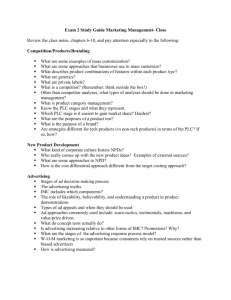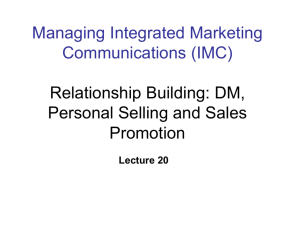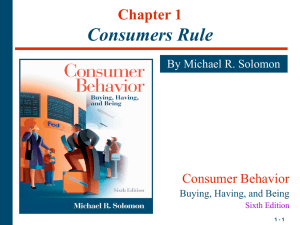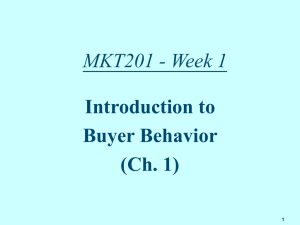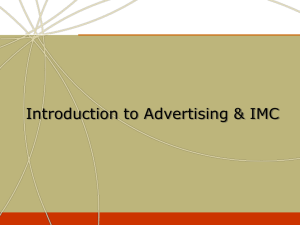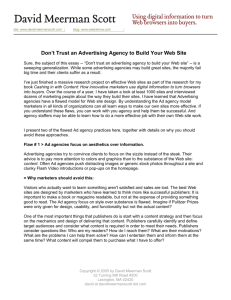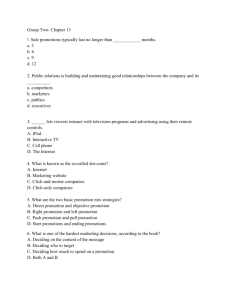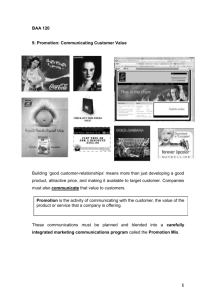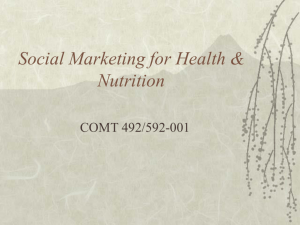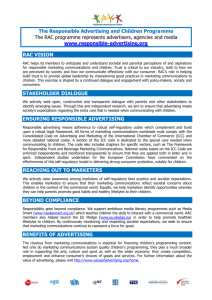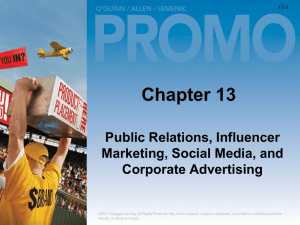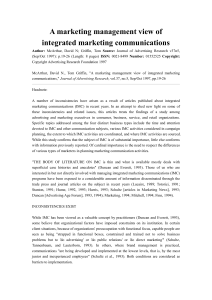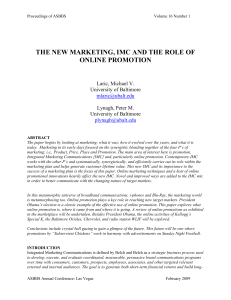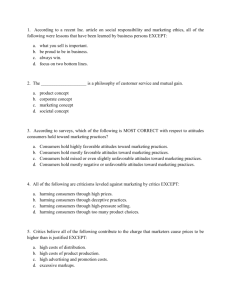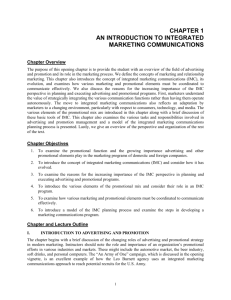Study Guide for Promotional Strategy Exam 3
advertisement
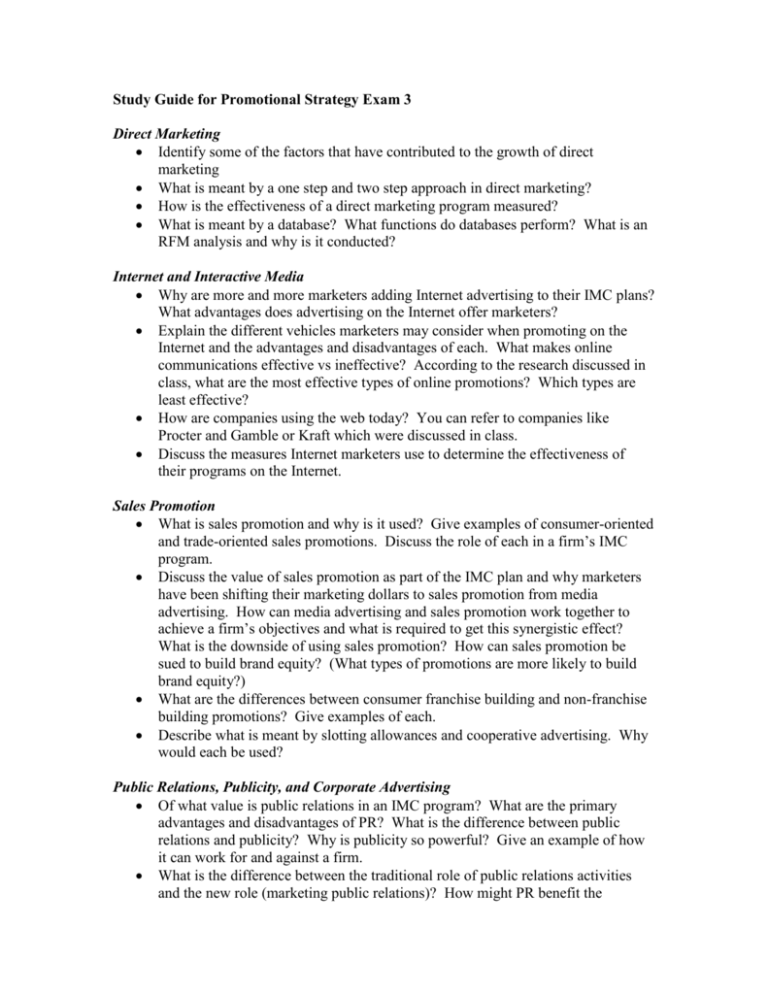
Study Guide for Promotional Strategy Exam 3 Direct Marketing Identify some of the factors that have contributed to the growth of direct marketing What is meant by a one step and two step approach in direct marketing? How is the effectiveness of a direct marketing program measured? What is meant by a database? What functions do databases perform? What is an RFM analysis and why is it conducted? Internet and Interactive Media Why are more and more marketers adding Internet advertising to their IMC plans? What advantages does advertising on the Internet offer marketers? Explain the different vehicles marketers may consider when promoting on the Internet and the advantages and disadvantages of each. What makes online communications effective vs ineffective? According to the research discussed in class, what are the most effective types of online promotions? Which types are least effective? How are companies using the web today? You can refer to companies like Procter and Gamble or Kraft which were discussed in class. Discuss the measures Internet marketers use to determine the effectiveness of their programs on the Internet. Sales Promotion What is sales promotion and why is it used? Give examples of consumer-oriented and trade-oriented sales promotions. Discuss the role of each in a firm’s IMC program. Discuss the value of sales promotion as part of the IMC plan and why marketers have been shifting their marketing dollars to sales promotion from media advertising. How can media advertising and sales promotion work together to achieve a firm’s objectives and what is required to get this synergistic effect? What is the downside of using sales promotion? How can sales promotion be sued to build brand equity? (What types of promotions are more likely to build brand equity?) What are the differences between consumer franchise building and non-franchise building promotions? Give examples of each. Describe what is meant by slotting allowances and cooperative advertising. Why would each be used? Public Relations, Publicity, and Corporate Advertising Of what value is public relations in an IMC program? What are the primary advantages and disadvantages of PR? What is the difference between public relations and publicity? Why is publicity so powerful? Give an example of how it can work for and against a firm. What is the difference between the traditional role of public relations activities and the new role (marketing public relations)? How might PR benefit the organization’s marketing programs? How can you assess the effectiveness of public relations activities? What is the purpose of corporate advertising? How may it benefit the firm? Describe what is meant by a proactive versus a reactive approach to public relations. Which is more beneficial to the firm? Advertising Research Describe the various types of testing done to ensure the effectiveness of ads and discuss the rationale for each of these tests. Understand the various types of pretests and posttest including lab test, field, Starch tests, day after recall, concept tests, etc. Why do companies use the Starch test? What does it measure? How would an advertiser use the results of this test? What is the difference between a lab test and field test? What is the principle advantage of each? When should each be used? What is meant by split cable testing? How and why is it used? What is meant by single source ad research (tracking studies)? What information is gathered from a single source? What is the value of this research in terms of what it allows marketers to measure?

